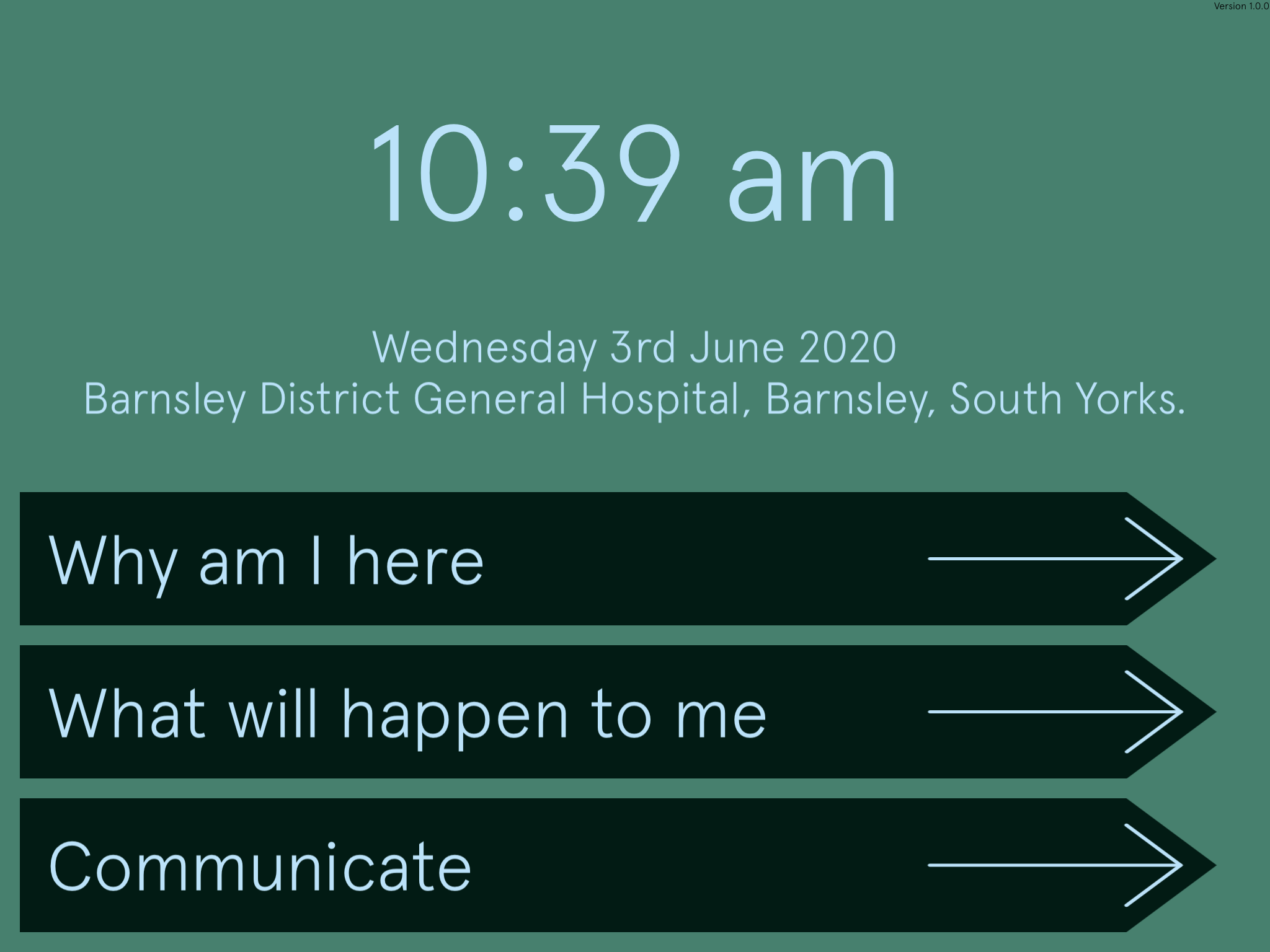 |
|
An App to Support Communication in ICU
- The main app screen provides reassurance: patients described waking up in a state of confusion not knowing where they were and what would happen to them.
- Communication can build from single words: past patients and their relatives described the person who can talk doing the majority of the work when
communicating. - The app comes with some pre-defined words: these are based on the topics that patients and relatives of those who had been on ICU said were important
- The words in the app can be personalised: relatives or staff can add words specific to the individual to allow simple and quick communication of topics important to the patient.
- Communication can happen over a long time: as well as communicating in the moment the app can be left with the patient and they can construct a message over a
long period of time. Patients described having moments of lucidity and moments of hallucination, fatigue and confusion. - The app has multiple way of supporting novel communication: a simple keyboard allows the patient to type a message, and the app also includes 2 tools to allow hospital staff or relatives to support the patient in communicating.
ICU App Resources
 ICU App Explainer – This PDF guide which describes the rationale behind the app and how to use it, and how to access the settings (for relatives and hospital staff).
ICU App Explainer – This PDF guide which describes the rationale behind the app and how to use it, and how to access the settings (for relatives and hospital staff).
ICU App Paper & Partner Resources – This PDF is designed to be printed out onto paper and laminated if possible. The resources are designed to be used by communication partners to support the communication of an individual on ICU/HDU in communicating.
The resources can be used in a number of ways:
- Pointing and Partner assisted scanning – where the communication partner points at each option in turn and the patient indicates to choose that item.
- Eye gaze – where the patient looks at the symbol they want (this is easier if printed on see through plastic – Acetate)
- By asking closed yes/No questions , that then narrow down, such as ‘do you want something?’, ‘is it in the room?’,
Issues & Future Developments
The initial version of this app (v1.0.1, released 25-6-20) was created as the output of a research project and released in response to the Covid Pandemic. The app has been rebuilt from the ground up by HMA in order to fix some issues around saving of communication content and this stable version (v 1.0.2) was released 8/1/21.
As the output of a research project, the app is released ‘as is’ – however if you have any ideas for improving the app, or do find any issues with the app please do let us know and we will attempt to fix them.
Privacy Notice
What data do we collect? We do not collect any personal information about you. Anonymous statistics are collected about how many times the app is downloaded and which parts of the app are used.
How do we collect your data? No personal data is collected by the app, all information entered into the app is stored only on the device.
How will we use and store your data? We will not use or store any personal data and will not send any marketing information via any channels about this app.
What are your data protection rights and how do I contact the appropriate authorities? Barnsley Hospital is the data controller and the data subject rights are described in the hospital’s Privacy Notice.
How to contact us: You can contact the AT team using the details on our website, however please note that this app is released ‘as-is’.
Acknowledgements and Credits
Funding and Support: Devices for Dignity, Barnsley Hospital.
![]()
Concept and Research: Imperial College Healthcare, Dom King; Barnsley Hospital Assistive Technology Team, Simon Judge.
![]()

Design: Helix Centre, Tom Stables

App development: Digital Stitch, Victor Lesk
App development for release: HMA, Richard Strickland

